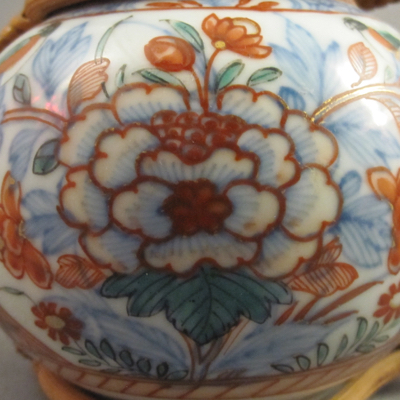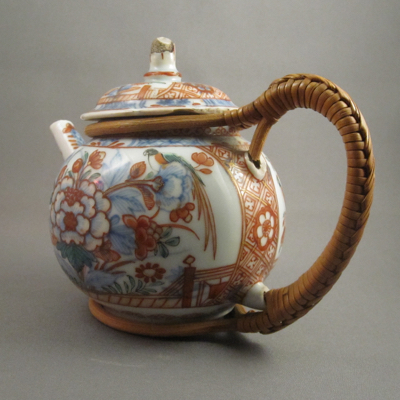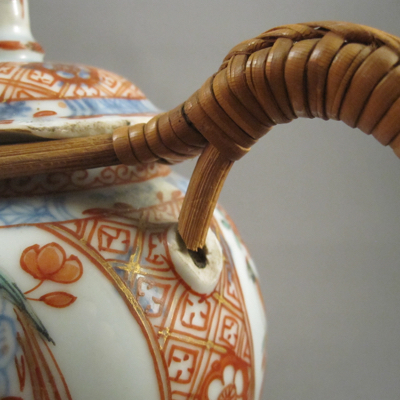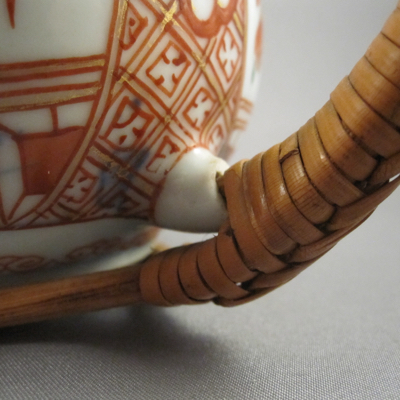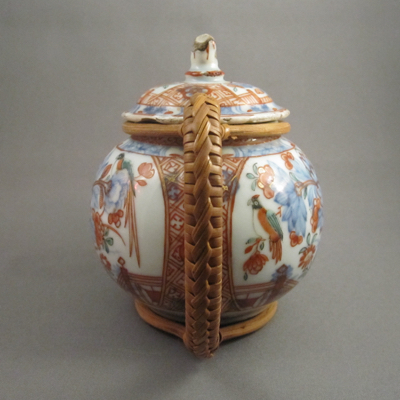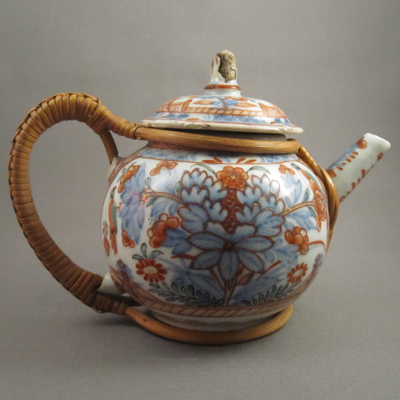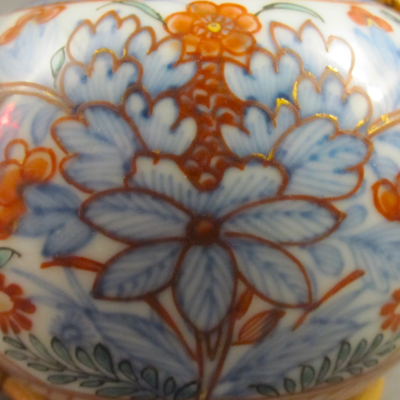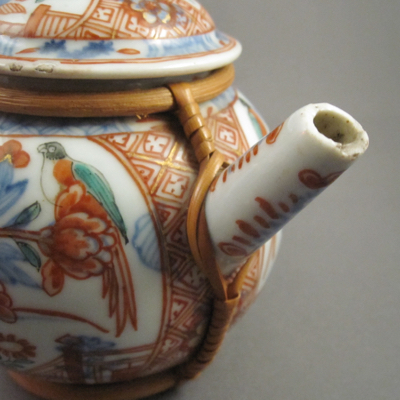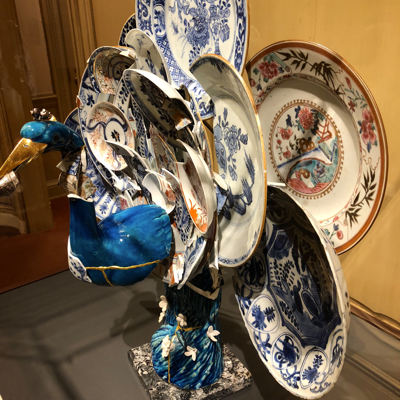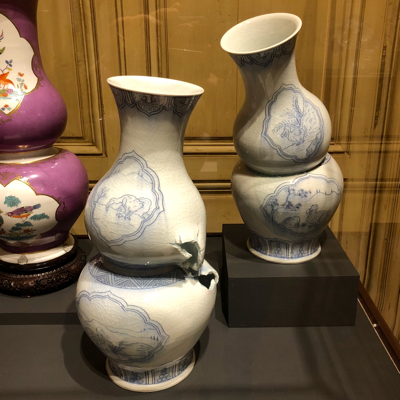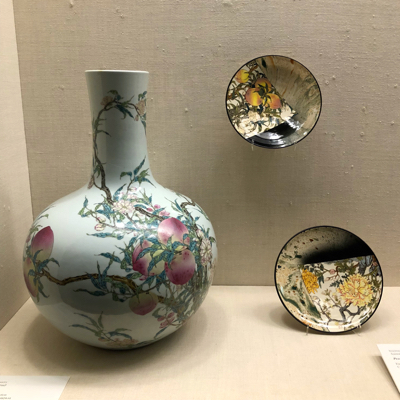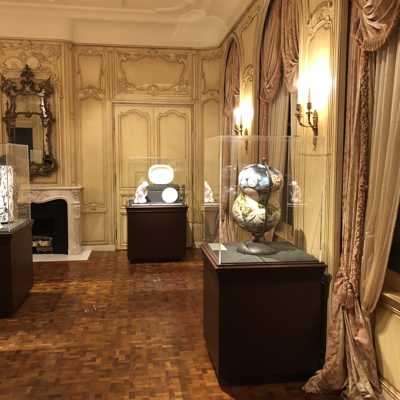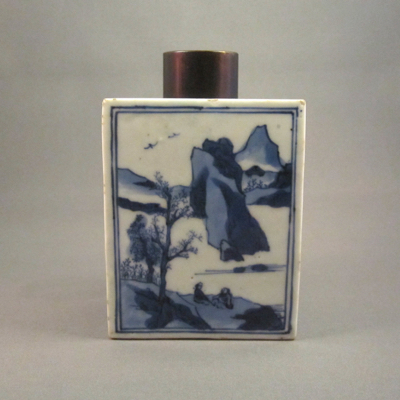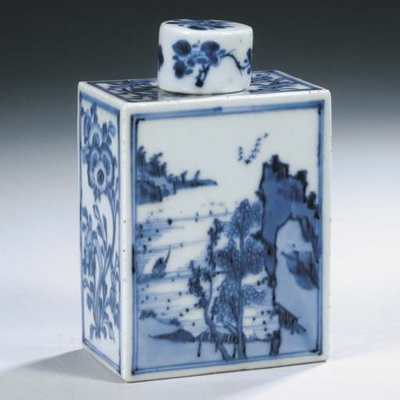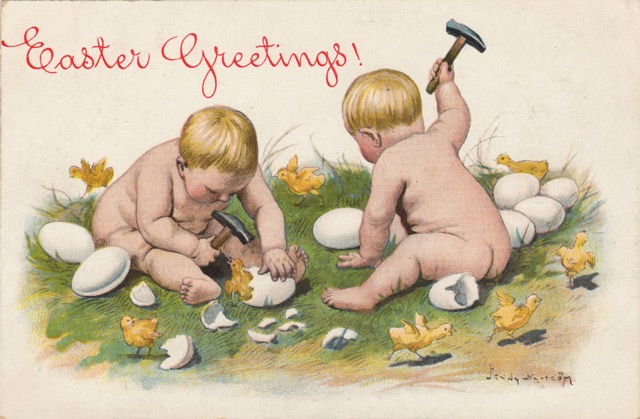This mocha ware mug was made in England, c.1800. It is lavishly decorated with two bands of brown slip, “seaweed” decoration, and rouletted patterns at the top and middle. It stands nearly 6 inches high.
Strange that even with the sustained damage, which occurred over 100 years ago, the original strap handle with foliate terminals remains intact. The multiple fractures were stabilized by a tinker in the 1800s by adding two metal bands around the top and middle section. The mug no longer holds liquids as it once did, but remains a staunch symbol of survival.
I was thrilled to add this beauty, once owned by author Jonathan Rickard, to my collection. Jonathan writes: “The quart mocha mug came from a Rhode Island dealer whose name escapes me. It was at the Tolland, Connecticut annual show perhaps ten years ago. Like most dipped wares, it will remain anonymous regarding its maker.” Thank you Jonathan, the Rhode Island dealer, and all of the other previous owners for saving this wonderful mug from the trash heap.










